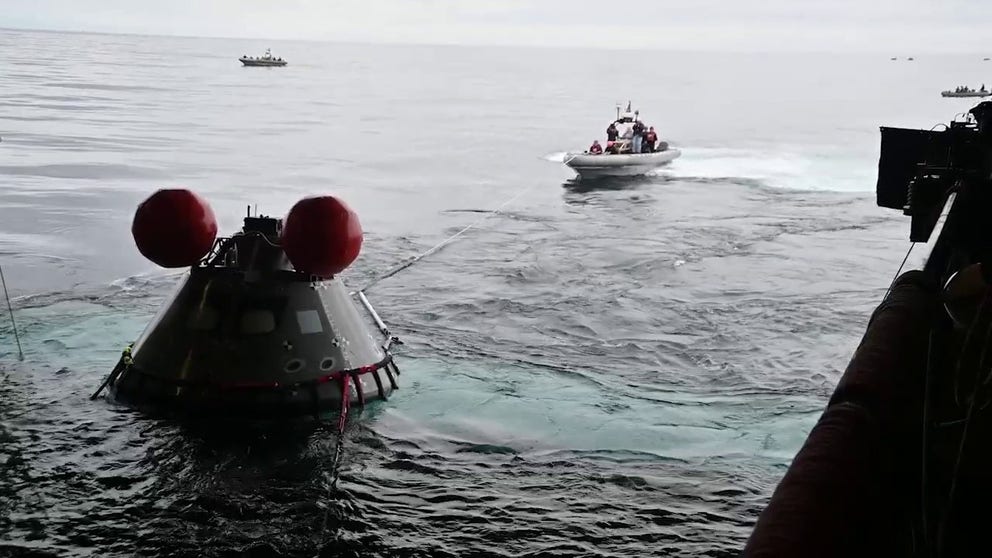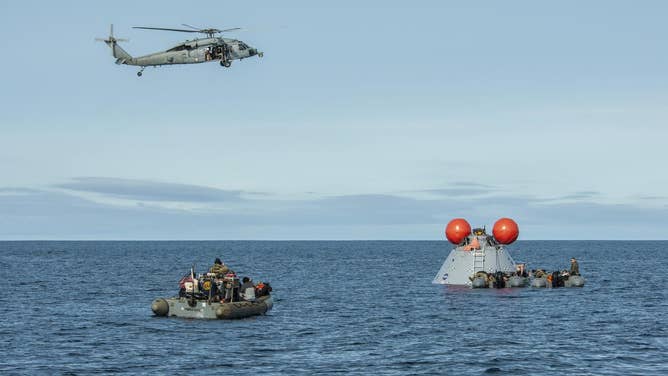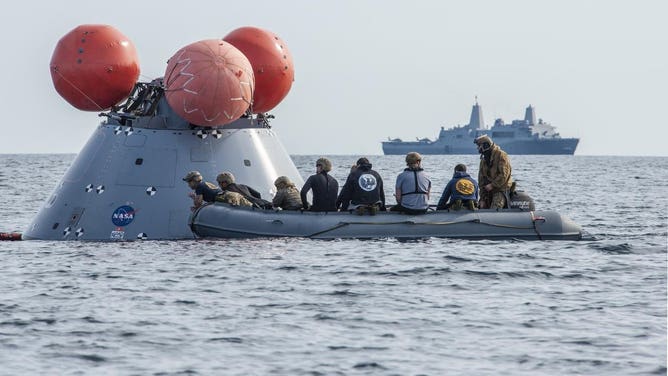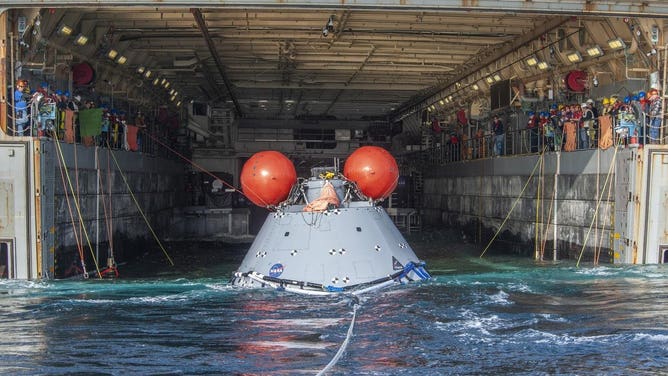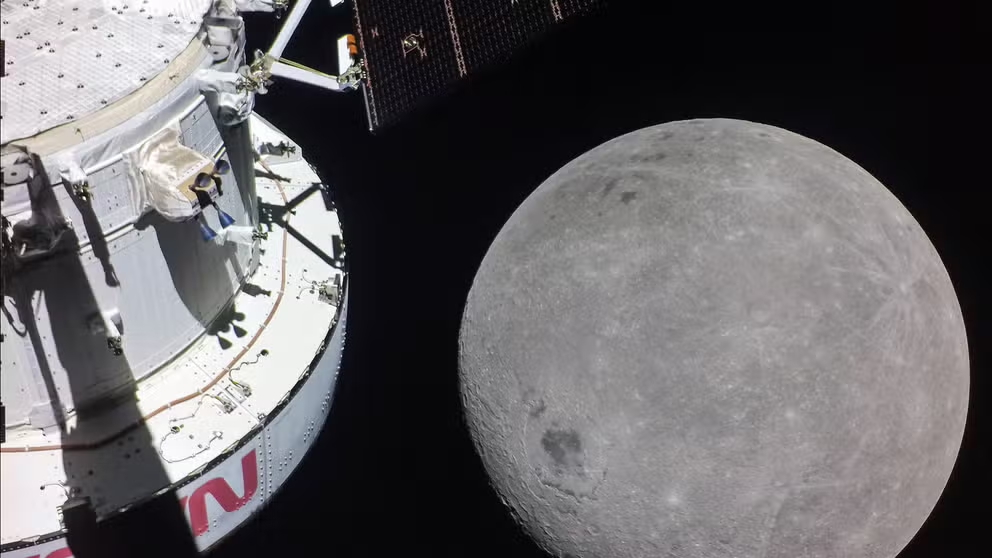Watch how the US Navy will recover the Artemis I mission spacecraft from the Pacific Ocean
Orion is expected to splash down off the coast of northern Mexico on December 11, after spending more than three weeks in space.
Artemis I recovery training held off the coast of California
Watch how the US Navy will recover the Orion spacecraft in the Pacific Ocean.
SAN DIEGO – Recovery teams say they are ready to retrieve the Orion spacecraft after it splashes down off the Mexican coast Sunday, capping off a three-week mission that produced stunning imagery of the moon and helped prepare the space agency for human exploration.
Crews aboard the USS Portland recently completed their final rehearsal in the cold waters of the Eastern Pacific, that included recovering a test version of the Orion capsule.
Video released by NASA showed teams of personnel deploying from the San Diego-based amphibious transport ship and attaching lines to the test capsule before dragging the large structure into the ship’s well.
"Last week, we completed our final rehearsal with the USS Portland, which will be our recovery ship for Artemis I," said Melissa Jones, landing and recovery director, NASA’s Kennedy Space Center. "We had a great three days working with them to refine our procedures and integrate our teams, so we can meet the objectives of recovering the Orion spacecraft."
NASA’S ORION SPACECRAFT OFFERS LAST BREATHTAKING VIEWS OF THE MOON AS IT BEGINS JOURNEY HOME
For the landing to occur, the weather must be optimal, with calm seas and minimal wind that could impact the trajectory.
After clearance, the capsule is expected to reenter Earth’s atmosphere at a speed of more than 24,000 mph on Sunday morning before three parachutes unfurl and slow the Orion to a speed of 20 mph or less before splashdown.
The space agency originally planned for Orion to land off the coast of San Diego but due to weather NASA moved the target splashdown zone to what are expected to be calmer waters off the Northern Baja of Mexico.
NASA’s Landing and Recovery team, which is made up of divers, will attach a cable to pull the capsule into a specially designed cradle.
Once secured on deck, the Navy ship will return to port in San Diego, where the offloading process is expected to begin.
WATCH: NASA’S ORION SPACECRAFT VIEWS AN ECLIPSE OF THE MOON AND EARTH
An extensive review of data will determine if the Space Launch System rocket and Orion spacecraft are a viable option to return astronauts to space.
If the Artemis 2 mission is given the green light, a crew will launch from the Kennedy Space Center and journey around the moon before returning to Earth in 2024.
"Artemis 1 leads to Artemis 2, which leads to Artemis 3, when we hope to have humans on the surface of the moon. But Artemis 1 is leading to the rest of the Artemis program. The first woman, the first person of color on the surface of the moon and then the first humans tracking out to Mars and putting our footsteps and building science laboratories and inhabiting another planet," said Reid Wiseman, NASA’s chief astronaut.
A landing on the moon likely wouldn’t take place until at least 2025 and be the first since Apollo 17 in 1972.
Artemis 1 mission: Orion spacecraft captures breathtaking images of the Earth and moon
As Orion began its closest approach to the moon yet, NASA shared live views of the moon and Earth as seen from the Artemis I spacecraft.
